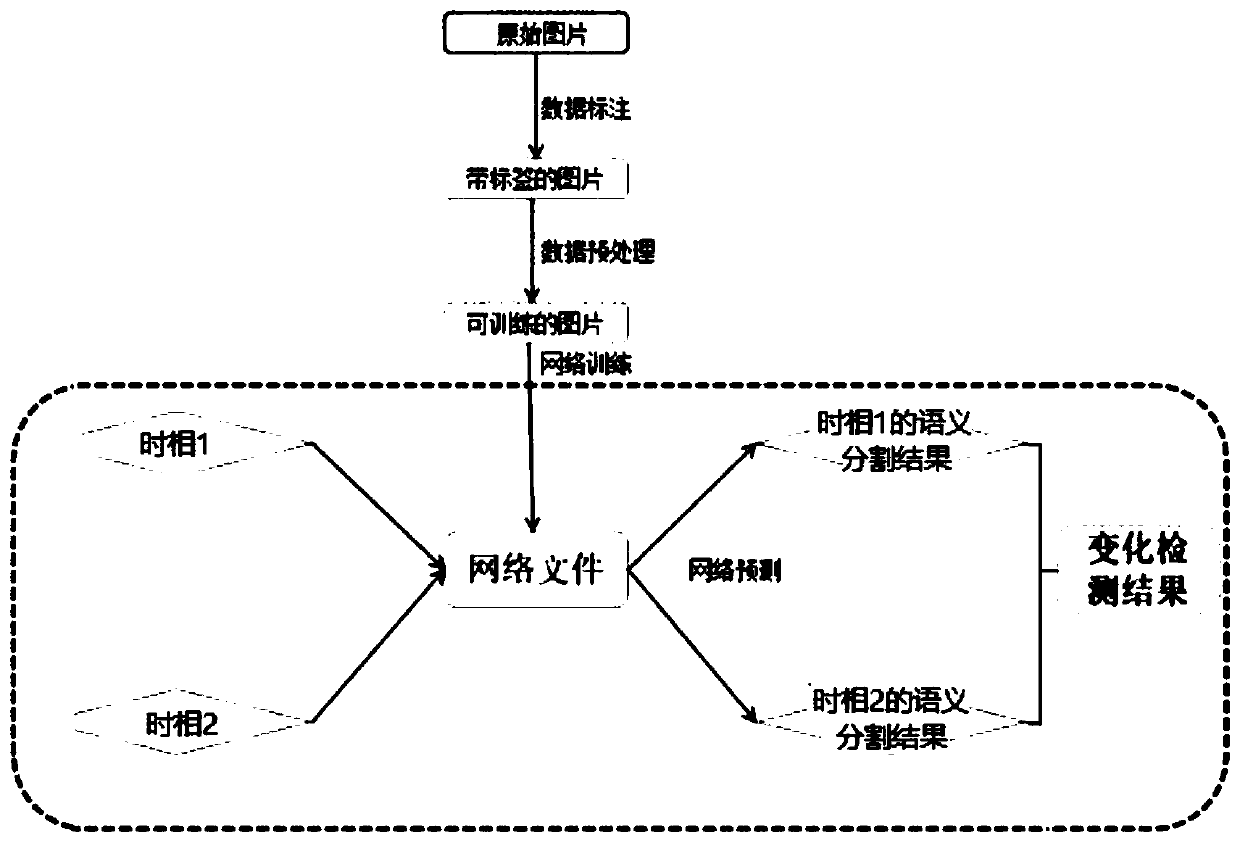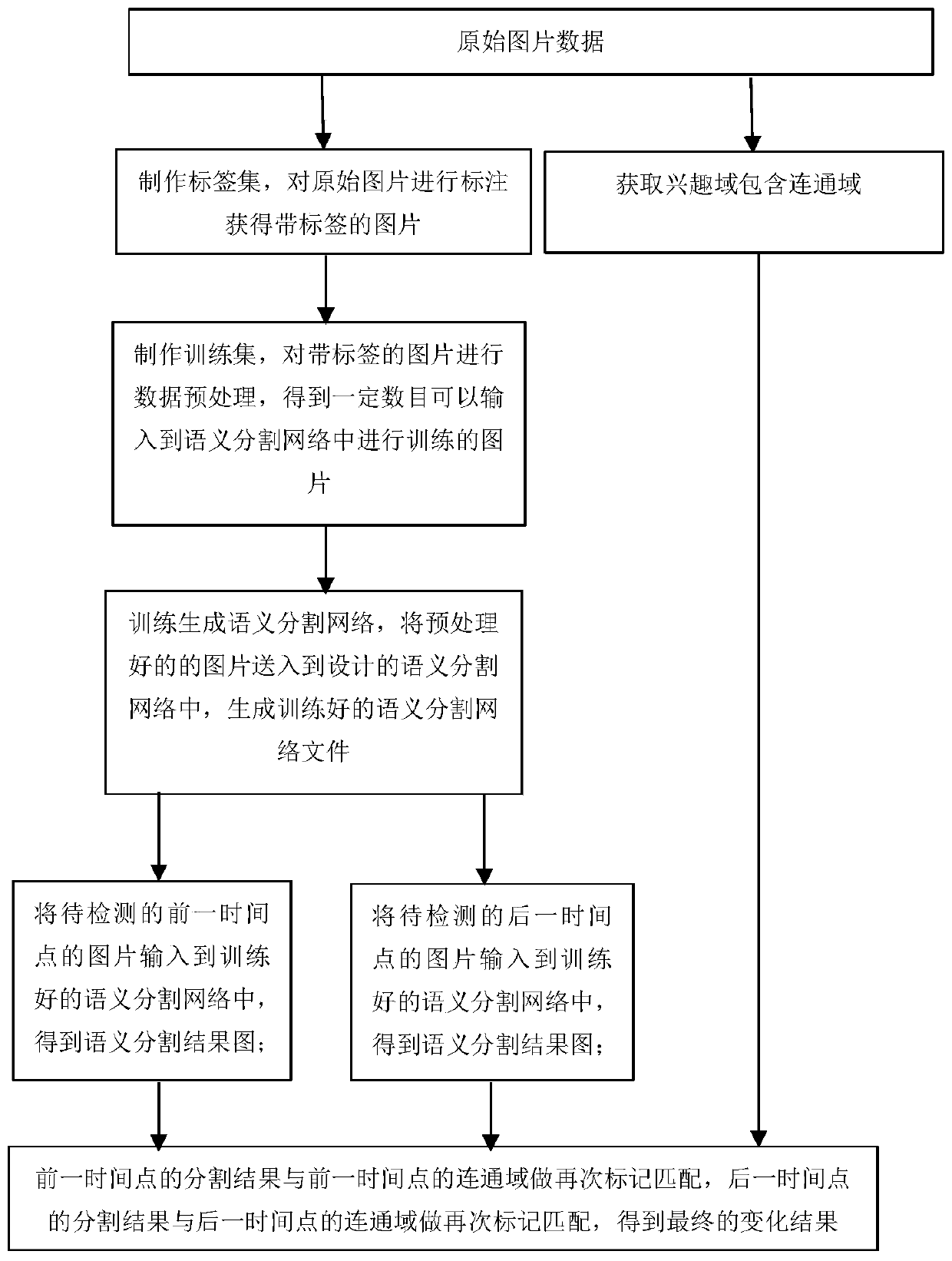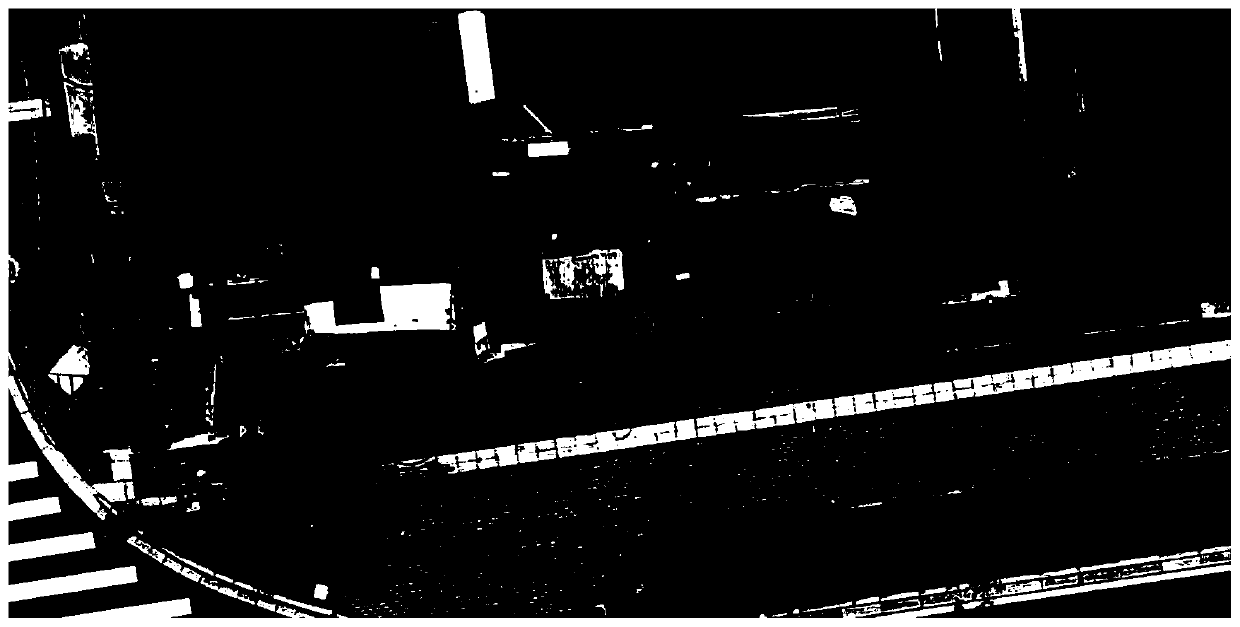An unmanned aerial vehicle aerial image change detection algorithm based on semantic segmentation
A technology of image change detection and semantic segmentation, which is applied in computing, computer components, instruments, etc., can solve the problems of not being able to identify the category of changes, not fully utilizing the advantages of deep neural networks, and relying on segmentation results
- Summary
- Abstract
- Description
- Claims
- Application Information
AI Technical Summary
Problems solved by technology
Method used
Image
Examples
Embodiment 1
[0053] figure 1 It is a schematic flow chart of the UAV aerial image change detection algorithm based on semantic segmentation in this embodiment. The present invention provides an UAV aerial image change detection algorithm based on semantic segmentation, which utilizes the UAV in two different time periods (phase 1 and time phase 2) photograph and collect image data at the same place to obtain the original picture, and the output picture result processed by the algorithm of the present invention is not affected by the data collected from different angles and different latitudes and longitudes when the image is collected by the drone. It is characterized in that it comprises the steps of:
[0054] S1. Make a label code set: mark the original picture to obtain a picture with label code;
[0055] S2, making training set: carry out data preprocessing to the picture with label code, obtain the training set picture that is input into the semantic segmentation network and train; ...
Embodiment 2
[0092] figure 2 It is a schematic flow chart of the UAV aerial image change detection algorithm based on semantic segmentation in this embodiment. Compared with Embodiment 1, the difference between the semantic segmentation-based UAV aerial image change detection algorithm in this embodiment is that Before the step S5, it also includes the step of obtaining the connected domain of the domain of interest: obtaining the connected domain information of the domain of interest in the original image;
[0093] In the step S5, the label coding of each pixel is compared, and the specific method of changing the detection after classification is different from that of embodiment 1, including the following steps:
[0094] Combining the two semantic segmentation result graphs obtained in step S4 with the domain-of-interest graph obtained in the original image, including the domain-of-interest information graph of the domain-of-interest, and performing pixel-level comparison and judgment o...
PUM
 Login to View More
Login to View More Abstract
Description
Claims
Application Information
 Login to View More
Login to View More - R&D
- Intellectual Property
- Life Sciences
- Materials
- Tech Scout
- Unparalleled Data Quality
- Higher Quality Content
- 60% Fewer Hallucinations
Browse by: Latest US Patents, China's latest patents, Technical Efficacy Thesaurus, Application Domain, Technology Topic, Popular Technical Reports.
© 2025 PatSnap. All rights reserved.Legal|Privacy policy|Modern Slavery Act Transparency Statement|Sitemap|About US| Contact US: help@patsnap.com



